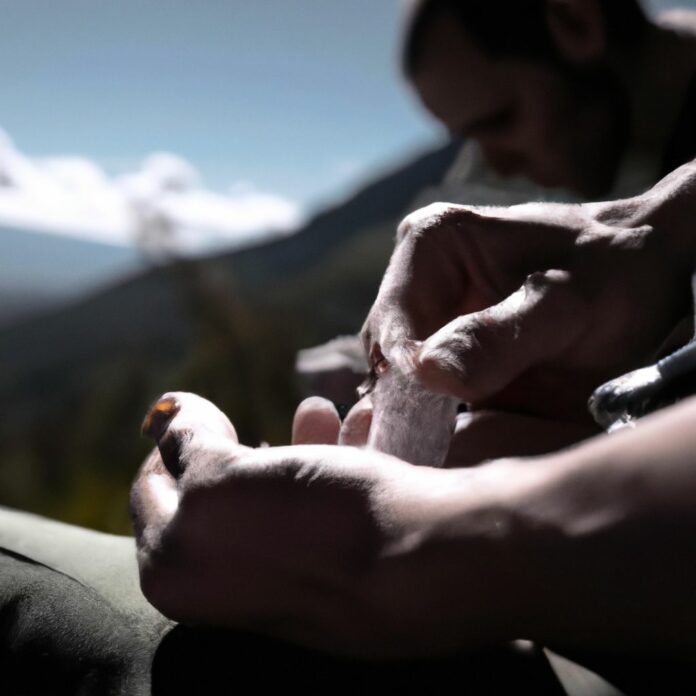When embarking on outdoor adventures, having first aid skills is of utmost importance. Being prepared to handle potential injuries and emergencies can make a significant difference in ensuring the safety and well-being of yourself and others in remote or challenging environments.
According to a study published in the Journal of Wilderness and Environmental Medicine, individuals with first aid knowledge and skills are better equipped to respond to outdoor emergencies effectively.
By equipping yourself with the essential first aid skills and preparations for outdoor adventures, you can confidently enjoy your outdoor pursuits while ensuring the safety and well-being of yourself and others.
The Importance of First Aid Skills in Outdoor Adventure
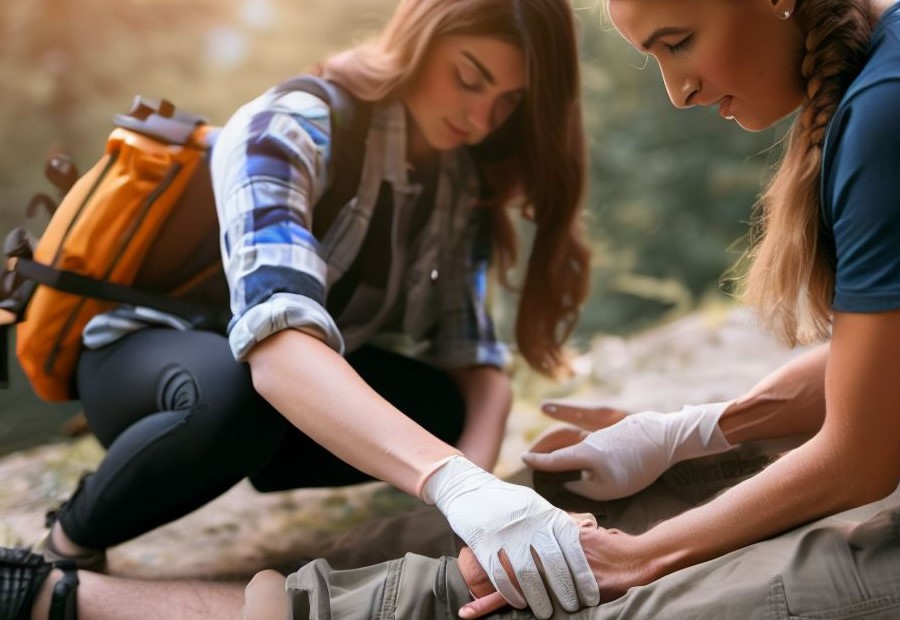
First aid skills are vital in outdoor adventure to ensure the safety and well-being of individuals. They have a crucial role in providing immediate medical assistance before professional help arrives, enabling individuals to effectively respond to emergencies and potentially save lives. The significance of first aid skills in outdoor adventure cannot be overstated.
By possessing these skills, individuals can actively respond to injuries or medical emergencies, such as cuts, sprains, or fractures. They can administer basic life-saving techniques like CPR or the Heimlich maneuver. Furthermore, these skills enable individuals to stabilize injured persons and prevent their condition from worsening until professional medical help can be obtained.
In outdoor adventure activities where immediate access to medical facilities is limited, having first aid skills becomes even more crucial. It empowers individuals to take prompt action and provide immediate care, reducing the severity of injuries and increasing the chances of a successful recovery.
Moreover, first aid skills enhance individual confidence and preparedness, allowing them to enjoy outdoor activities with peace of mind. Being trained in first aid fosters a culture of safety and responsibility, ensuring a safer environment for everyone involved in outdoor adventures.
Therefore, recognizing the importance of first aid skills in outdoor adventure is essential for individuals to prioritize their safety and the well-being of others during these activities.
Basic First Aid Skills for Outdoor Adventure
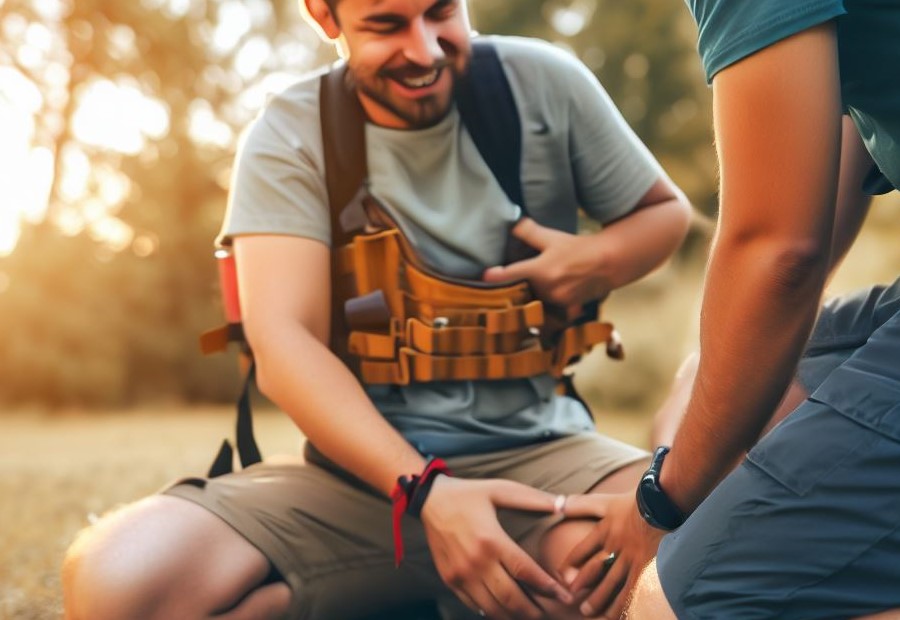
Basic First Aid Skills for Outdoor Adventure are crucial for ensuring the safety and well-being of individuals in various situations. Let’s explore the essentials that every adventurer should possess. From mastering CPR and AED techniques to effectively managing wound cleaning and dressing, as well as splinting and immobilization methods, we’ll cover it all. Additionally, we’ll delve into the treatment for burns and how to handle allergic reactions, equipping you with the necessary knowledge to handle emergencies in the great outdoors.
CPR and AED
When it comes to outdoor adventure, having knowledge of CPR and AED is crucial.
- CPR (Cardiopulmonary Resuscitation) is an essential life-saving technique that involves chest compressions and rescue breaths. It plays a vital role in maintaining blood circulation and oxygenation for individuals experiencing cardiac arrest.
- An AED (Automated External Defibrillator) is a portable device designed to deliver an electric shock to the heart in cases of sudden cardiac arrest. It effectively restores the heart’s normal rhythm.
- Both techniques, CPR and AED, are of utmost importance during cardiac emergencies, where time is of the essence.
- By performing CPR and utilizing an AED, the chances of survival and long-term health damage reduction significantly increase.
- To enhance preparedness in outdoor activities, it is highly recommended to undergo certified training programs to learn CPR and AED techniques.
- Regular practice and refresher courses are necessary to maintain proficiency in these life-saving skills.
- In outdoor adventure settings, emergency action plans should incorporate protocols for CPR and AED usage.
- It’s crucial to remember that timely and effective CPR, along with the prompt use of an available AED, has the potential to save lives.
Acquiring CPR and AED skills equips outdoor adventurers to respond to cardiac emergencies and potentially save lives.
Wound Cleaning and Dressing
When it comes to wound cleaning and dressing during outdoor adventures, it is crucial to follow proper procedures to prevent infection and promote healing. Start by cleaning the wound with clean water or a mild antiseptic solution. Gently remove any debris from the wound using sterile tweezers or clean hands.
If the wound is deep or bleeding heavily, apply direct pressure with a clean cloth or sterile gauze. Once the bleeding has stopped, apply an antiseptic ointment to prevent infection. Cover the wound with a sterile dressing or bandage to protect it from further contamination.
Secure the dressing in place using adhesive tape or bandages. If the wound is on a joint or an area that moves frequently, use a stretchy or self-adhesive bandage to provide additional support. Monitor the wound regularly for any signs of infection, such as increased redness, swelling, or pus. Change the dressing and clean the wound daily or as instructed by a healthcare professional.
Splinting and Immobilization
When it comes to outdoor adventures, having knowledge of splinting and immobilization is crucial for providing proper first aid. Splinting is the process of immobilizing a fractured or injured bone to prevent further damage or pain.
When splinting, it is important to try and immobilize the joint above and below the fractured area to minimize movement. Using sturdy materials such as wood, metal, or even rolled-up newspapers can be effective for creating a splint. Ensure that the splint is secured tightly but not too tight as to cut off circulation.
Always check for any signs of restricted blood flow, such as bluish or pale skin, tingling, or numbness. Immobilization refers to the act of restricting movement in an injured area to prevent further harm.
Avoid unnecessary movement of the injured body part to prevent aggravating the injury. Immobilization can also be achieved by using slings, bandages, or other supportive devices. Remember to keep the injured person comfortable and reassured throughout the process.
By understanding the importance of splinting and immobilization, you can effectively provide immediate care for fractures and other injuries during outdoor adventures.
Treatment for Burns
Treatment for burns:
- Assess the severity of the burn. Determine whether it is first-degree, second-degree, or third-degree.
- If the burn is minor and superficial (first-degree), run cool (not cold) water over the affected area for at least 10 minutes to help relieve pain and reduce swelling.
- For second-degree burns, which involve blistering and deeper damage to the skin, gently clean the area with mild soap and water. Apply a sterile non-stick dressing to protect the burn and prevent infection.
- Third-degree burns, the most severe, require immediate medical attention. Do not attempt to treat them yourself.
- If the burn is caused by chemicals, remove any contaminated clothing and rinse the burn with cool running water for 20 minutes.
- Avoid using adhesive bandages, creams, lotions, or ointments on burns as they can trap heat and hinder the healing process. Instead, cover the burn with a clean, non-stick dressing.
Pro-tip: In case of severe burns, always seek medical help. It’s important to remember that burns can put a person at risk for infection and other complications, so prompt and appropriate treatment is crucial.
Dealing with Allergic Reactions
When it comes to dealing with allergic reactions, it’s important to take swift action and be prepared. Here are the essential steps to take:
- Recognize the symptoms: Be aware of common signs of allergic reactions such as itching, rash, swelling, difficulty breathing, or anaphylaxis.
- Remove the allergen: If possible, identify and eliminate the allergen from the person’s environment to prevent further exposure.
- Administer antihistamines: If the reaction is mild, provide the individual with antihistamine medication to help alleviate symptoms.
- Do not hesitate to use an epinephrine auto-injector: If the person is experiencing severe symptoms like difficulty breathing or throat swelling, immediately use an epinephrine auto-injector while waiting for emergency medical assistance.
- Call for emergency medical help: Even if the symptoms are mild, it’s crucial to seek medical assistance to ensure the person’s safety and prevent the reaction from worsening.
- Monitor the person’s condition: Keep a close eye on the individual for any changes in symptoms or deterioration while waiting for medical help.
- Stay with the person: Offer reassurance and support to help reduce anxiety and keep them calm during the allergic reaction.
Remember, prompt and appropriate action is crucial when dealing with allergic reactions. It’s always recommended to seek professional medical advice after an allergic reaction to ensure proper diagnosis and care.
Advanced First Aid Skills for Outdoor Adventure
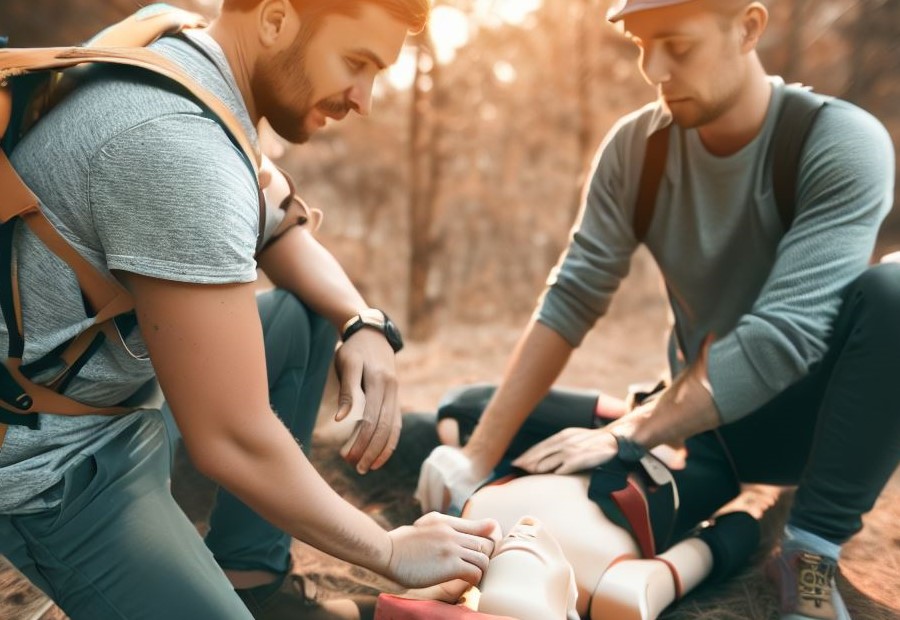
Get ready to take your outdoor adventure skills to the next level with advanced first aid techniques. From wilderness first aid to managing fractures and dislocations, treating hypothermia and hyperthermia, and recognizing and treating animal bites and stings, this section will equip you with the essential knowledge to handle medical emergencies in the great outdoors. So, buckle up and get ready to master the art of saving lives while exploring the wilderness like a pro!
Wilderness First Aid
When it comes to outdoor adventures, having Wilderness First Aid skills is crucial for handling potential medical emergencies. Wilderness First Aid incorporates a range of essential skills and knowledge that are necessary in outdoor settings.
- Assessment and Prioritization: Recognize and prioritize injuries and medical conditions based on severity, a key component of Wilderness First Aid.
- Managing Trauma: Wilderness First Aid equips individuals with the knowledge on how to control bleeding, immobilize fractures, and stabilize injuries in a wilderness setting.
- Medical Emergencies: Wilderness First Aid ensures individuals understand how to recognize and treat common medical emergencies such as heart attacks, strokes, and diabetic emergencies.
- Environmental Injuries: Wilderness First Aid teaches individuals how to identify and manage hypothermia, heat exhaustion, dehydration, and altitude sickness, all important considerations in outdoor environments.
- Wound Care: Wilderness First Aid emphasizes the importance of cleaning and dressing wounds appropriately to prevent infection and promote healing.
- Emergency Communication: Wilderness First Aid provides individuals with the necessary knowledge on how to use communication devices effectively to call for help and provide accurate information to emergency responders.
- Evacuation and Transportation: Wilderness First Aid equips individuals with the skills to make a plan for safe and efficient evacuation from remote areas and effectively transport injured individuals.
In wilderness first aid situations, prompt and effective action can save lives and improve outcomes. Therefore, having Wilderness First Aid knowledge and skills is essential for ensuring the safety and well-being of yourself and others during outdoor adventures.
Managing Fractures and Dislocations
When it comes to managing fractures and dislocations in an outdoor adventure setting, it is crucial to take immediate action to minimize further injury and provide appropriate care.
- Assess the situation: Evaluate the severity of the fracture or dislocation and look for any signs of open wounds or deformity.
- Immobilize the affected area: Use a splint or make-shift stabilizer to prevent any movement that could aggravate the injury. This will help to reduce pain and potential damage.
- Elevate the limb: If possible, elevate the injured limb to help decrease swelling and promote better blood circulation.
- Apply cold compress: Use a cold pack or wrapped ice to the affected area to reduce pain, swelling, and inflammation.
- Seek professional medical help: Contact emergency services or transport the individual to the nearest medical facility as soon as possible for further evaluation and treatment.
- Provide pain relief: If available, administer over-the-counter pain medication according to the recommended dosage to alleviate discomfort.
- Monitor for complications: Keep a close eye on the injured individual for any changes in symptoms, such as numbness, loss of sensation, or changes in skin color.
Remember, managing fractures and dislocations requires proper training and expertise. It is important to have individuals with first aid certification or wilderness first aid training present in outdoor adventure settings to ensure prompt and effective care.
Treating Hypothermia and Hyperthermia
Treating hypothermia and hyperthermia is essential for addressing the health risks associated with outdoor adventures. When it comes to hypothermia, it is crucial to gradually and gently warm the person. This can be done by removing wet clothes, covering them with dry blankets or clothing, and providing warm fluids if the person is conscious.
If the case is severe, immediate medical attention should be sought. On the other hand, hyperthermia requires cooling the person down. This can be achieved by moving them to a shaded area, removing excess clothing, and applying cool water or ice packs to their body. It is also important to ensure they stay hydrated.
To prevent hypothermia and hyperthermia, active measures should be taken. This includes dressing appropriately in layers, staying properly hydrated, and avoiding prolonged exposure to extreme temperatures.
When planning outdoor activities, it is important to consider wind chill, especially for hypothermia prevention. Additionally, recognizing early signs such as shivering, confusion, and clumsiness can significantly contribute to early intervention and prevent complications.
Did you know that severe hypothermia can lead to serious health conditions such as cardiac arrest and organ failure? This is why quick and effective treatment is crucial to ensure the well-being and survival of individuals in such situations.
Recognizing and Treating Animal Bites and Stings
When it comes to outdoor adventure, it is crucial for your safety to recognize and treat animal bites and stings. Here are some important steps to follow:
- Identify the animal: If you have been bitten or stung, try to identify the animal responsible. This will help in determining the appropriate treatment.
- Remove any stingers or venom sacs: In case of bee or wasp stings, gently scrape the area to remove any stingers or venom sacs that may be lodged in the skin.
- Clean the affected area: Wash the bite or sting site with soap and water to reduce the risk of infection.
- Apply a cold compress: Use a cold compress or an ice pack wrapped in a cloth to reduce swelling and pain.
- Seek medical attention if necessary: If the bite or sting is severe, causes an allergic reaction, or if you are unsure of the animal responsible, it is important to seek medical attention immediately.
- Observe for signs of infection: Keep an eye on the bite or sting site for any signs of infection, such as increased redness, swelling, or pus. If these symptoms develop, consult a healthcare professional.
- Take appropriate pain relief: Over-the-counter pain relievers can be taken if necessary to alleviate discomfort.
- Preventative measures: To minimize the risk of animal bites and stings, it is important to be vigilant, avoid contact with unknown animals, wear appropriate protective clothing, and use insect repellent when necessary.
First Aid Kits and Equipment for Outdoor Adventure
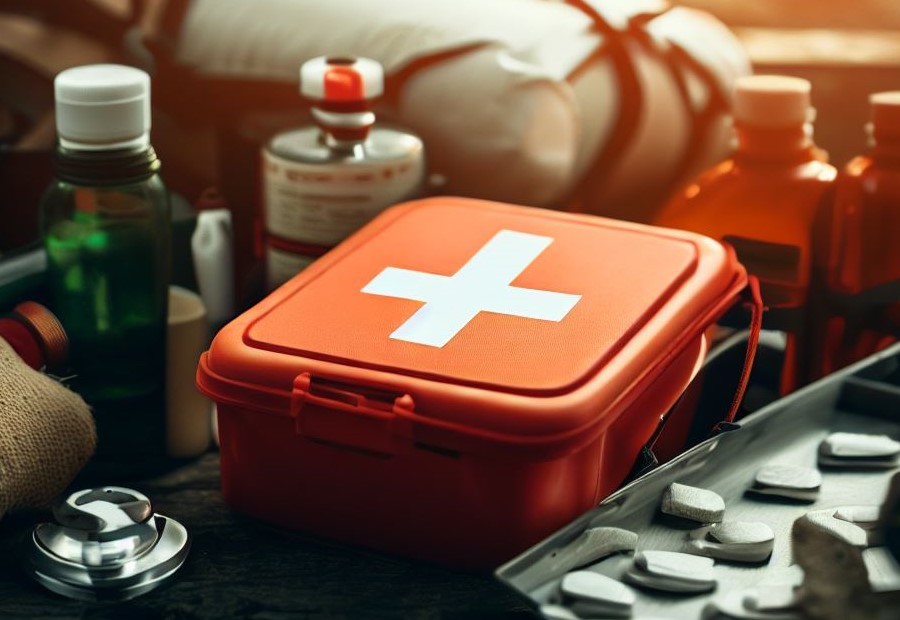
Discover what must-have items your first aid kit should contain, ensuring you’re prepared for any unexpected situations. Additionally, we’ll explore some additional equipment that can come in handy during your outdoor excursions. So, pack your bags and let’s dive into the world of outdoor safety preparedness!
Essential Items for First Aid Kits
When it comes to outdoor adventures, having a well-stocked first aid kit is essential to ensure the safety of yourself and others. Here is a list of essential items for first aid kits to include in your first aid kit:
- Adhesive bandages: These are essential for covering minor cuts, scrapes, and blisters.
- Gauze pads: Use these to dress larger wounds and absorb blood.
- Medical tape: This helps to secure dressings and bandages in place.
- Antiseptic wipes: Use these to clean wounds and prevent infection.
- Tweezers: Essential for removing splinters or foreign objects from the skin.
- Scissors: Essential for cutting tape, clothing, or bandages.
- Large trauma pads: These are important for covering and controlling bleeding in more serious injuries.
- Disposable gloves: Protect yourself from bodily fluids and ensure hygienic first aid procedures.
- Pain relievers: Include over-the-counter pain medications such as ibuprofen or acetaminophen.
- Antihistamines: Helpful for treating allergic reactions and insect bites.
A well-stocked first aid kit can make a significant difference in providing immediate care during outdoor adventures. Remember to periodically check and replenish your supplies to ensure they are up to date and ready for use.
True story: During a hiking trip, a fellow hiker slipped and sustained a deep cut on their leg. Thanks to a well-prepared first aid kit, we were able to quickly clean the wound, apply a dressing, and stop the bleeding. This allowed the injured hiker to continue the trek safely until we reached professional medical help. Including essential items for first aid kits can truly be a lifesaver in unexpected situations.
Additional Equipment for Outdoor Adventure
- GPS device: A GPS device is an essential piece of additional equipment for outdoor adventures as it helps in navigation and tracking your location.
- Compass: A compass is a reliable backup navigation tool in case your GPS device fails or runs out of battery, making it crucial for outdoor adventure.
- Headlamp: A headlamp is a crucial piece of additional equipment for hands-free lighting during night hikes or emergency situations.
- Whistle: A whistle is an important addition to your outdoor adventure gear as it can be used to alert others in case of an emergency and can carry sound over long distances.
- Multi-tool: A multi-tool is a versatile piece of additional equipment that can be used for various tasks such as cutting, screwdriving, and opening bottles during outdoor adventures.
- Emergency shelter: An emergency shelter, such as a lightweight tent or bivvy bag, is crucial additional equipment that can provide protection from harsh weather conditions during outdoor adventures.
- Water filter or purifier: Having a water filter or purifier is essential additional equipment that allows you to safely drink water from natural sources during your outdoor adventure.
- First aid kit: An extensive first aid kit is crucial additional equipment for treating injuries and emergencies that may occur during outdoor activities.
- Fire-starting tools: Carrying fire-starting tools like waterproof matches or a fire starter kit is important additional equipment that helps in creating warmth, cooking food, and signaling for help during outdoor adventures.
Training and Preparedness for Outdoor First Aid
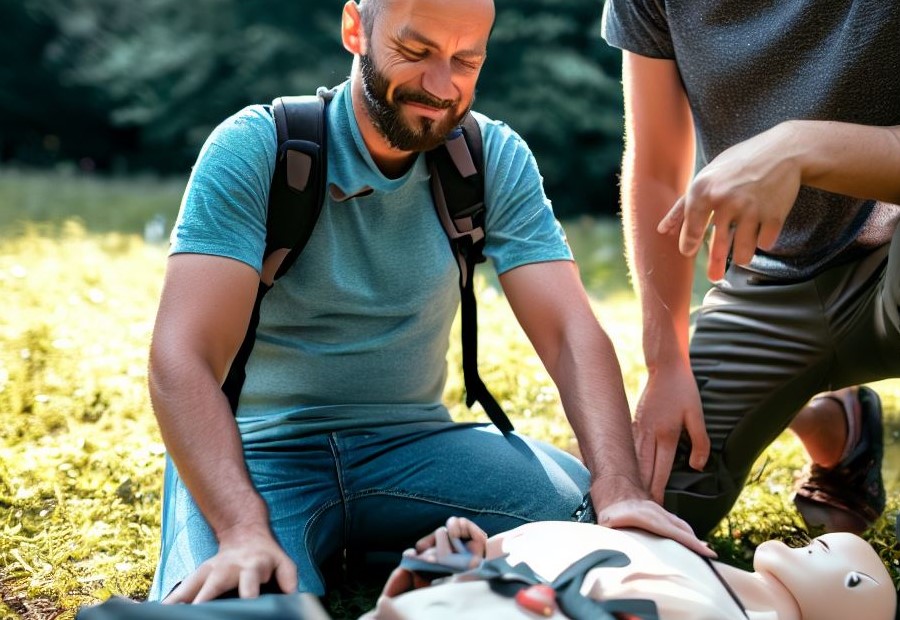
Are you prepared to handle emergency situations during your outdoor adventures? In this section, we’ll focus on the training and preparedness needed for outdoor first aid. We’ll discuss the importance of first aid certification, the value of regular training and refreshers, as well as the significance of having emergency action plans in place. Stay tuned to discover the essential skills and knowledge that will keep you ready to tackle any outdoor mishap with confidence.
First Aid Certification
Getting certified in first aid is extremely important for individuals who partake in outdoor adventures. Having a first aid certification ensures that you possess the necessary skills and knowledge to effectively respond to medical emergencies in remote or challenging environments.
- Basic life support techniques: With a first aid certification, you acquire essential skills like CPR and AED. These techniques are crucial for reviving individuals experiencing cardiac arrest.
- Wound management: The certification program teaches you proper techniques for cleansing and dressing wounds. This knowledge helps prevent infections and promotes the healing process.
- Fracture and injury management: You learn how to provide splinting and immobilization for broken bones or sprains. This prevents further damage and reduces pain.
- Emergency burn care: Certification covers the appropriate treatment for burns. This includes understanding burn severity and implementing proper first aid measures to minimize tissue damage.
- Allergic reaction response: Knowing how to handle allergic reactions can be life-saving. First aid certification provides guidance on recognizing and managing allergic emergencies, including administering epinephrine in severe cases.
During a hiking trip, Jane, a certified first aider, encountered a fellow hiker who had suffered a severe ankle sprain. Thanks to her first aid certification, she was able to provide immediate care by implementing proper immobilization and assisting the injured hiker back to safety. Her quick response and knowledge made a significant difference in preventing further injury and reducing pain.
Regular Training and Refreshers
Regular training and refreshers are essential for maintaining first aid skills when participating in outdoor adventures. This ensures that individuals are prepared to handle emergencies effectively.
- Stay updated: Regular training sessions and refreshers allow individuals to stay updated with the latest techniques and advancements in first aid. It ensures that they are familiar with new protocols and procedures.
- Practice skills: Regular training and refreshers provide an opportunity to practice first aid skills, such as CPR and wound dressing, to maintain proficiency. Practice sessions help individuals maintain muscle memory and increase confidence in their abilities.
- Review knowledge: Regular training and refreshers give participants a chance to review their knowledge of first aid concepts, such as treating fractures, hypothermia, and animal bites. This helps reinforce important information and ensures that individuals are well-prepared for various scenarios.
- Stay aware of changes: Regular training sessions and refreshers allow individuals to stay aware of changes in safety guidelines and emergency protocols. This helps them adapt their skills and responses as needed.
- Continual improvement: Regular training and refreshers provide opportunities for individuals to identify areas for improvement and cultivate their first aid skills. It allows them to refine techniques, boost their confidence, and enhance their overall proficiency.
Emergency Action Plans
Emergency action plans play a vital role in guaranteeing the safety and well-being of individuals engaging in outdoor adventures. To create a comprehensive emergency action plan, it is important to consider the following key elements:
- Clear communication: Establish a reliable communication system among group members, which includes assigning leaders and determining the means of contact.
- Emergency contacts: Compile a list of emergency contacts, such as local authorities, medical professionals, and park rangers, and make it easily accessible to all participants.
- Evacuation procedures: Develop a detailed plan for evacuating the area during emergencies, including specific routes, designated meeting points, and transportation arrangements.
- First aid training: Ensure that at least one member of the group is trained in first aid, encompassing CPR and basic life-saving techniques.
- Equipment and supplies: Keep a well-equipped first aid kit readily available, stocked with necessary medications, bandages, and other essential items.
Pro-tip: It is crucial to regularly review and practice the emergency action plan with all participants to ensure familiarity with the procedures and the ability to respond swiftly and effectively during an emergency.
Frequently Asked Questions
What are the essential first aid skills for outdoor adventure?
Whether you’re an outdoor enthusiast, hiker, or involved in recreational activities, having essential first aid skills is crucial for your safety. Here are the key skills you should know:
- How to handle bone fractures, particularly serious fractures involving the head, neck, or back.
- Splinting to stabilize and prevent further damage for other types of fractures.
- Using a quick clot and tourniquet kit to stop severe bleeding (as a last resort).
- CPR training to save lives, especially in the absence of professional medical help.
- Performing the Heimlich maneuver to prevent choking, which can be a leading cause of accidental death.
- Utilizing elements in the environment during emergencies and having the ability to stabilize victims.
What should I learn in a Wilderness First Aid (WFA) class?
For outdoor enthusiasts and risk-takers, attending a Wilderness First Aid (WFA) class is highly recommended. In these classes, you will learn:
- Basic backcountry first-aid techniques to prevent worsening of injuries.
- The RICE technique for sprains and strains (Rest, Ice, Compression, Elevation).
- Stabilizing the spine after a fall or forceful impact to the head or back.
- Controlled direct pressure to effectively manage bleeding.
- Preventing heat exhaustion by staying hydrated, seeking shade, and cooling down.
- Treating hypothermia by removing wet clothing and gradually warming the person.
What first aid techniques can help in wilderness emergencies?
When facing wilderness emergencies, being prepared and equipped with the right knowledge is vital. Here are essential techniques:
- Knowing the area, having a map, and identifying evacuation routes.
- Carrying a well-stocked First Aid kit and a communication device (e.g., cell phone, satellite phone, or Personal Locator Beacon).
- Calling 911 or Search and Rescue in life-threatening emergencies.
What are some common trail injuries and how can they be treated?
The wilderness can pose risks and injuries, but knowing how to treat them is important. Some common trail injuries include:
- Burns: Learn how to prevent and treat burns.
- Blisters: Prevent and treat blisters to avoid discomfort.
- Sprained ankle: Properly tape and stabilize a sprained ankle.
- Cervical spine injuries: Treat these seriously as emergencies and immobilize the spine.
- Dental emergencies: Know how to handle dental emergencies while on the trail.
What are some tips for preventing and treating wilderness illnesses?
Illnesses can also occur in the wilderness, but with preventive measures and proper treatment, they can be managed. Here are some tips:
- Preventing diarrhea and hyponatremia with the right precautions.
- Recognizing and treating symptoms of illnesses promptly.
- Knowing how to prevent tick-borne infections.
What information can I find in the Backpacker outdoor first aid guide?
The Backpacker outdoor first aid guide is a valuable resource for anyone venturing into the wilderness. It provides information on:
- Prevention and treatment of various wilderness maladies.
- Dealing with wounds and controlling bleeding.
- Handling specific emergencies, such as animal attacks and hypothermia.
- Tips for staying safe on the trail and common health problems.

